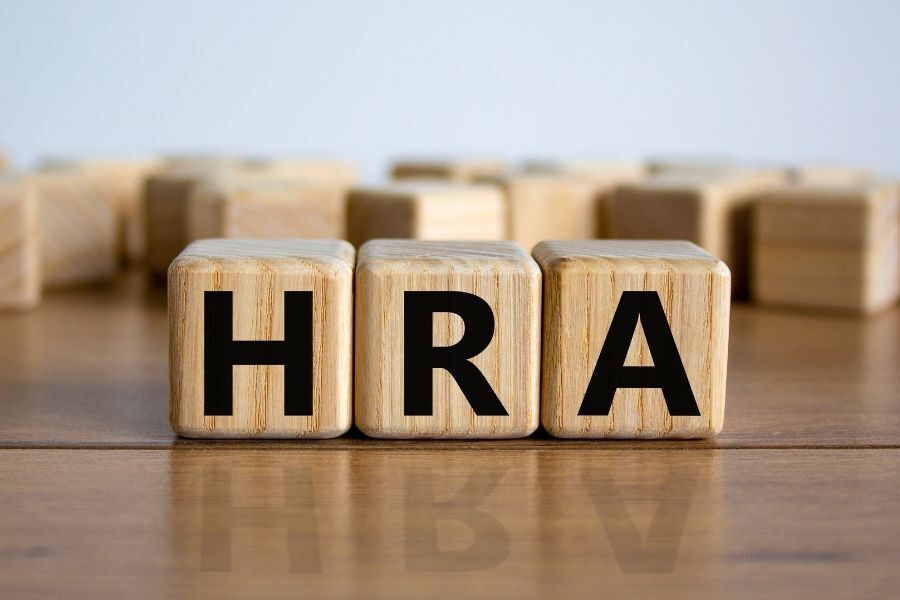What is an HRA, Generally?
HRA stands for “Health Reimbursement Arrangement.” An HRA isn’t traditional health insurance coverage; rather, it is a kind of health spending account that an employer can choose to provide to their employees. Funds in an HRA can pay for anything deemed a “qualified expense,” including medical, pharmacy, dental, and vision care expenses. Most commonly, HRA funds are used to reimburse employees for out-of-pocket medical expenses and health insurance premiums.
As an employer, you can choose to offer certain types of HRAs as a complement to traditional group health insurance or as an alternative to traditional insurance. Some employers offer traditional insurance to full-time employees and then either offer an HRA benefit only to part-time employees or offer an HRA benefit both to part-time employees and as a complement to their full-time employees’ health insurance offering.
What you can provide to your employees through an HRA varies with what type of HRA you offer. That’s why it’s important to understand the different types of HRAs available to your team. Read on for our comparison overview!
What Kinds of HRAs Can I Offer Employees?
A lot has changed on the regulatory landscape in recent years when it comes to HRAs! As of 2021, employers can offer the following six types of HRAs to employees:
1. Integrated HRAs
The most important thing to note about Integrated HRAs is that they must be integrated with traditional health insurance, i.e., this type of HRA can only be offered to employees as a complement to insurance. Say, for instance, you’d like to offer an HRA to your part-time employees to whom you do not offer full health insurance: you cannot offer an Integrated HRA for this purpose. (There are other types of HRAs you can offer to meet that goal; more on that later!)
You may also hear this type of HRA referred to as a Group Coverage HRA, or GCHRA. Integrated HRAs are generally used for reimbursement of out-of-pocket medical expenses that aren’t covered by health insurance. Funds from an Integrated HRA may, for example, go toward covering the cost of glasses, prescription payments, copays, and even pre-deductible costs. This is a particularly appealing facet of the Integrated HRA – when paired with a high deductible health plan, the plan becomes more comprehensive for employees.
You can design the Integrated HRA you offer such that you don’t have to pay for 100% of an employee’s qualified medical expenses. For example, you can set the policy so that your company pays for 85% of qualified expenses, and employees pay for 15%.
2. Retirement HRAs
Formed under Section 213(d) of the Internal Revenue Code, a Retirement Health Reimbursement Account allows employers to provide tax-free money for qualified medical expenses incurred after the employee has retired. The IRS defines which types of expenses are deemed “qualified” under this HRA.
To be eligible for a Retirement HRA, employees must have paid into Social Security Benefits. Benefits under this type of HRA do not accrue until the employee has retired. Upon the passing of an employee, the account can be passed to their dependent(s).
3. Dental and Vision HRAs
This type of HRA only covers reimbursements for dental and/or vision expenses exclusively. A dental and/or vision HRA is a great option to consider if you’re offering health insurance that doesn’t cover dental or vision, or the premiums are particularly high. Under a dental or vision HRA, eligible dental expenses typically include check-ups, exams, cleanings, X-rays, glasses and contact lenses, and even orthodontic work and laser eye surgery.
4. Qualified Small Employer HRAs
Qualified Small Employer HRAs, or “QSEHRAs,” became available for employers to provide to their employees due to a 2017 piece of legislation. This type of HRA is only available to companies that don’t offer a group health plan and have fewer than 50 employees.
Reimbursement limits are capped on QSEHRAs to $5,150 for employees without spouses or dependents and $10,450 for employees with families. As the employer, you can choose to contribute less, but not more. QSEHRAs typically work like this: an employee pays their insurance company, then the employee will submit proof of payment for tax-free QSEHRA reimbursement. If an employee never submits claims for reimbursement, the employer retains the funds and can choose to roll it over from year to year while the business still employs the employee.
5. Individual Coverage HRAs
Individual Coverage HRAs or “ICHRAs” became available for employers to provide to their employees in 2020. Think of the Individual Coverage HRA is as a combination of an Integrated HRA and Qualified Small Employer HRA (QSEHRA). The Individual Coverage HRA, like the Integrated HRA, can be provided by employers regardless of how many employees they have. Further, the Individual Coverage HRA can only be provided to employees with an individual health insurance plan or Medicare.
An ICHRA provides for the reimbursement of individual health insurance premiums and other out-of-pocket expenses. As the employer, you can set the reimbursement limits on this type of HRA.
6. Excepted Benefit HRAs
Excepted Benefit HRAs are also a relatively new addition to the employee benefit toolbox! This type of HRA allows employers to pay for medical care, such as vision or dental expenses, copays for individual health insurance coverage, COBRA premiums, and qualified expenses not covered by a group health plan. However, funds from Excepted Benefit HRAs cannot go toward the reimbursement of individual health insurance coverage premiums, group health plan premiums, or Medicare premiums.
Excepted Benefit HRAs must be offered as a complement to a traditional group health plan. Employees, however, are not required to actually enroll in the traditional group health plan.
This type of HRA allows for the rollover of unused funds from year to year. Like QSEHRAs, Excepted Benefit HRAs come with reimbursement limit caps. The annual cap for Excepted Benefit HRAs is $1,800 per year, but this number is adjusted each year for inflation.
What are the Benefits of Providing an HRA to Employees?
We’ve already gone over the benefits of providing an HRA to complement a traditional health insurance plan. Namely, employees can essentially receive more comprehensive health coverage in the form of lower deductibles, copays, and reimbursements for uncovered expenses.
Many companies, however, prefer HRAs as an alternative to traditional insurance plans for two main reasons: 1) employers can better control the associated costs, and 2) HRAs come with certain tax advantages. In comparison to traditional insurance, HRAs are relatively simple, and they turn health expenses into a fixed cost without the threat of annual rate hikes.
Need Help Deciding Which HRA is Right for Your Organization?
As a professional, you know how important it is to make the best health coverage choices for your company. After all, the benefits your company provides are one of the most important recruitment and retention tools you can offer. If your organization would benefit from access to certified HR experts, it’s time to contact Benely.






